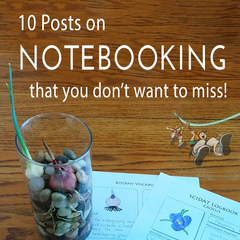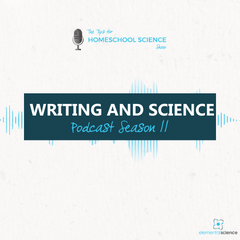Learning about famous scientists can deepen our students' appreciation and understanding of science. And so it's important that we add a few biographies and reports on key scientists throughout their homeschooling years.
To help you out with this task, we wanted to share 5 easy steps for writing a biography report on a famous scientist.
5 Easy steps for writing a scientist biography report
We love sharing about the key men and women in science with our students. We usually do this at different stages throughout their journey and this is something we incorporate into our programs. But typically, we recommend that students begin sharing scientist biography reports around third or fourth grade. In this beginning these will be super simple and they'll get more complex as the students get older. But they will all begin with...
Step 1: Choose and read
The first step for writing any scientist biography report is to have the students read about the scientist.
You may have a book, or article, scheduled in your science program, but if you don't have a book already scheduled for you with your science program, simply choose the scientist you would like to study and then head to your local library. The children's literature section generally has a section for biographies, which makes it easy to find a book that will work for your student.
Here is a list of options we have used in the past:
- 100 Scientists who made history (This book has simple articles on a variety of scientists that are great for younger kids.)
- Science Stories Series by Beverly Birch (These are simple biographies also good for younger kids.)
- Who Was series by a variety of authors (There are several scientists in this series, which is good for upper elementary and middle school kids.)
- Living History Library by Jeanne Benedick (There are several scientists in this series, which is good for middle school kids.)
- DK Biography Series (Again, there are several scientists in this series, which is good for middle school and high school kids.)
- DK Eyewitness: Great Scientists (This book has simple articles on a variety of scientists that are great for older kids.)
Once you have your book or article selected, you can read the selection all in one shot or you can break it up over a week or so. If your students are younger, feel free to read the selection out loud. Just be sure to discuss what the students have read, or listened to, each day.
Looking for a unit already put together for you on a scientist? Here are two you can download for free: Mendel and Pasteur.
Step 2: Answers several questions
After the students finish reading the book or the article, have them answer a few questions about the book.
These are the questions we like to ask:
- Who was the scientist you read about?
- When and where were they born?
- What was their major scientific contribution?
- List the events that surround their discovery.
- List some other interesting events in the scientist’s life.
- Why do you think that it is important to learn about this scientist?
Here is a free printable for you to use with your students as they answer these questions:
If your students are younger, feel free to act as their scribe as they answer these questions. The plan is that these questions will serve as a basic outline or a list of facts to pick and choose from when the students go to write their actual reports.
Step 3: Write a rough draft
The day after you answer the questions, review the student's answers and talk about how to structure the report. Your goal may be a simple one-paragraph report or it may be a several-page essay - this really depends upon the students' ages.
Here is a basic structure for a multi-paragraph report:
- One paragraph with the introduction and biographical information on the scientist,
- One paragraph on the scientist's major discovery and the events surrounding the discovery,
- One paragraph on some other events in the scientist's life,
- And a final paragraph that concludes the report and shares why someone should study the scientist.
You can reduce these topics to once sentence for a shorter report or expand them for a longer one.
Step 4: Edit
The day after, or a few days after, the students complete the third step, you need to have them edit their papers.
We read the whole draft together when editing because when we do it this way, my student usually picks up most of the errors on her own. Thus making the corrections hers instead of mine, which saves us quite a few tears. If we don't catch them all this way, I will point out any remaining errors and then we move on.
Then once we have finished editing, we will chat about the format for the final report. We typically give a few options for a scientist biography report.
- A mini-book
- A full-size poster
- A lapbook
- Or a standard report
If the students choose to do a mini-book, poster, or lapbook, we will also discuss what the layout of their final project will look like.
Step 5: Prepare the final report
After you finish editing and choosing a layout, the students should pull together their final reports.
This step is fairly easy because of all the work you did in the previous four steps. Basically, the students will take their edited draft and put it in the format you decided upon.
You can choose to grade the report or share it with a group. Either way, your students will gain a deeper understanding of science through the men and women that have shaped the course of the subject through their discoveries!
The Final Product
Choose and read a scientist's biography, answer the questions, write the rough draft, edit, and prepare the final report.
That is how you can write a scientist biography report in five simple steps. Hopefully, you are now inspired to try writing one with your students!


